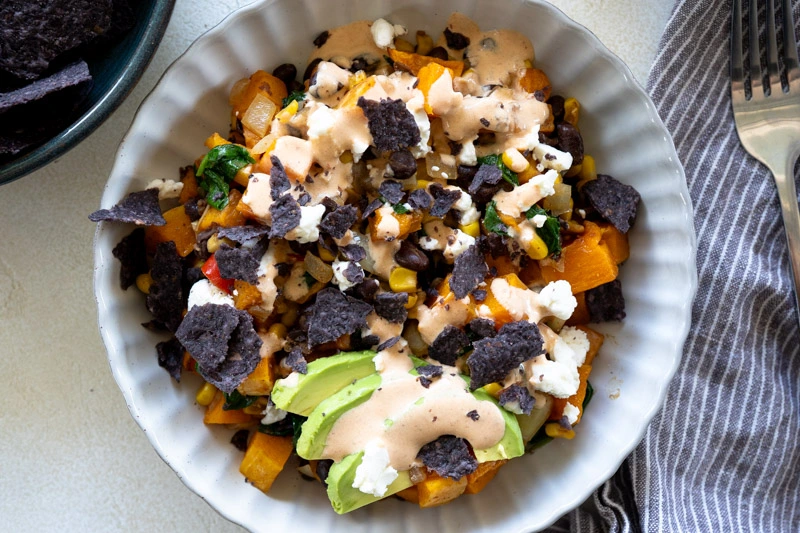Only have a few minutes to make a healthy and filling lunch or dinner? This recipe comes together super quick and is loaded with vegetables and plant protein.
This recipe is super versatile so you can add in different toppings based on what you have in your fridge or what your preferences are.
How to Make Vegan Thai Peanut Noodles
This recipe comes together fairly quickly. Here are the main 3 steps in making this recipe.
- Boil your favorite noodles.
- Make the Thai peanut sauce while the noodles cook.
- Chop up fresh vegetables for toppings.

Best Toppings for Peanut Noodles
I love loading this up with fresh vegetables. Some of my favorite veggies are carrots, bell pepper, green onion, and cilantro. You could also use sliced red cabbage, snap peas, or bean sprouts. Feel free to mix up the veggies you serve with it.
Another topping I love to add is some type of protein source. For this recipe I use edamame. Edamame is really easy to add to the dish. You can find shelled edamame fresh or frozen. If you can only find it frozen, just add it to a bowl with some boiling water and let it sit for a few minutes to defrost. Then just drain and add it to your bowl.
If you want more plant-based protein in this noodle bowl, add in some crispy tofu. This will take a bit longer but it will add a boost of nutrients and bulk up the meal a bit. You can use this crispy tofu recipe to bake it or you can just add cubbed tofu to a pan with hot oil and cook until browned.
If you are looking to amp up the spice level, feel free to add some chili oil or red pepper flakes to the top. You could also add a little bit of hot sauce or drizzle of sriracha to add that extra heat.
Tips For Making the Best Thai Peanut Noodles
When making these spicy peanut noodles there are a few things that make it much easier and more delicious. Here are a few tips to get the perfect dish every time.
- Thinly slice your veggies. Since you are adding the veggies fresh you want to make sure they are easily eatable with the noodles. To do this, slice the red pepper and green onions thinly. You can even use a vegetable peeler to get nice thin ribbons of carrot.
- Make sure your noodles don’t stick. Rice noodles can be tricky to cook because they will want to clump together. To avoid this, make sure to add them to fully boiling water and mix them a few times throughout the cooking process to keep them from settling. When the noodles are done cooking, drain them and run them under cold water to stop the cooking so they don’t stick together.
- Taste and adjust the flavors of the sauce. Depending on the type of peanut butter, soy sauce, and curry paste you use, the flavor could be slightly different. Make sure to taste the sauce. If it’s too thick, add some extra water, if it’s not spicy enough add extra curry paste. The sauce will be pretty rich at this point but remember you are adding it to noodles and fresh veggies that don’t have any seasoning on them yet.
- Use creamy peanut butter. The creamier the peanut butter the more silky the sauce is. If you are using a natural peanut butter or chunky peanut butter just know you might need to blend it a little longer or add a little extra water to thin it out.
What kind of noodles should you use for this recipe?
This recipe calls for brown rice noodles, also called pad thai noodles. I think they work great because they have a good bite to them and the size works well with the richness of the sauce. If you can't find or don't like rice noodles you could also use soba noodles. I would avoid using ramen noodles or udon noodles in this recipe just because they won't stand up to the sauce as well as the other options.


.svg)












Comments